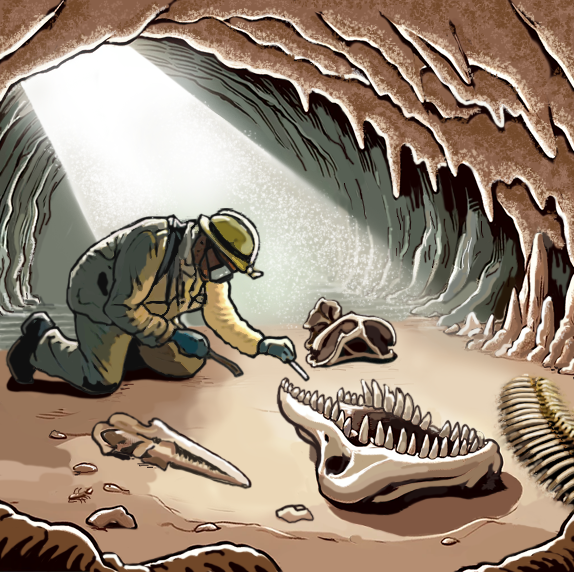
Scientists at Mammoth Cave National Park in Kentucky, the world’s longest cave system, have identified the fossils of two new species of shark deep within the cavern. The cavity’s underground location shields fossils from the natural elements and is a perfect vessel for preventing natural forces like erosion from tampering with the formations.
The two species, Troglocladodus Trimblei and Glikmanius careforum, are estimated to have lived in an ancient ocean that covered Kentucky and Alabama more than 325 million years ago. Bone structures of their jaw indicate that their diets were made up of mostly bony fish, smaller sharks, and other sea creatures.
Troglocladodus Trimblei was discovered through fossilized teeth that were found in the St. Louis Formation, an extremely low-lying part of the cave system that resides in Alabama. Named after the park superintendent Barclay Trimble, this species of shark is thought to have approached lengths of 10-12 feet.
Working with Western Kentucky University, the group of researchers at Mammoth Cave collected hundreds of small samples (primarily teeth and small pieces of vertebrae) to be tested through lab imaging and microscope testing. On top of these two species of shark, dozens of bony fish species have been identified, and the research team has categorized four distinctive geological horizons.
Though an extensive amount of the cave remains unexplored, the information gathered about the fossils and geology has helped scientists begin to reconstruct a more accurate model of how organisms interacted with the environment during prehistoric times.
Study link:
https://escholarship.org/uc/item/9rz2v701
The views and opinions expressed are those of the authors and do not necessarily reflect nor represent the Earth Chronicles and its editorial board.








